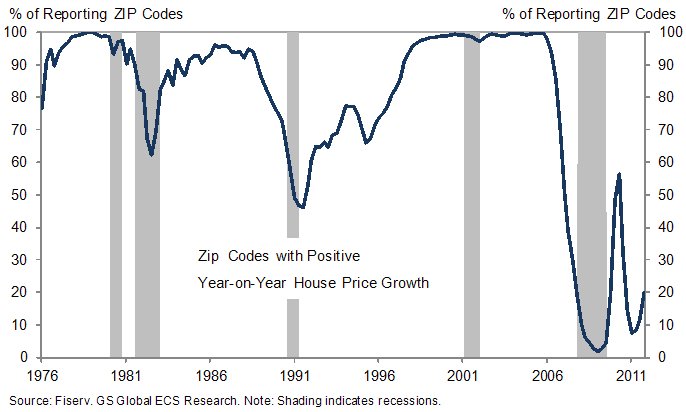by Michael Tarsala, CMT
A new Goldman index is reflecting the oversold condition of the U.S. housing market, and may indirectly be saying something about residential REITs as long-term investments.
You’ll need to read the latest from Sober Look for background.
What’s different about Goldman’s index is that it tracks the percentage of U.S. metro area ZIP codes with rising housing prices over time. So it’s more or less a running price breadth reading.
And as SoberLook points out, it provides an overbought/oversold indication, too.

As you can see, the index is now rising from a historically low level, suggesting that perhaps housing as an asset class is far closer to oversold than overbought.
But even if you wanted to, how do you really invest in housing? As many investors realize, owning your own home is a liability, not exactly an investment.
There are mortgage-backed (residential) REITs, of course. But conventional wisdom holds that real estate investment trusts are not for the faint of heart, and perhaps better as trading vehicles.
Yet John Gerard Lewis, manager of the Covestor Stable High Yield model, debunks that logic with the following two points:
- The average beta, or volatility, of the group of five REITs he studied was 0.28, or 72% less volatile than the overall stock market.
- He says that over the past several years, the average total return for those five representative REITs, held for various intervals of 24-months, was 52%.
So perhaps mREITs might be something to consider, after all.



